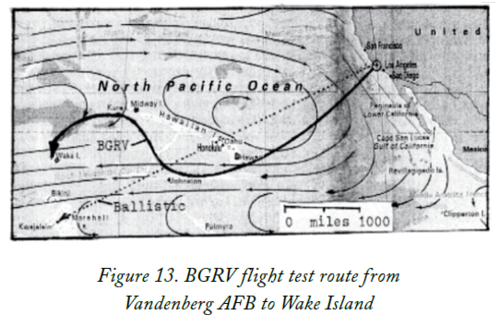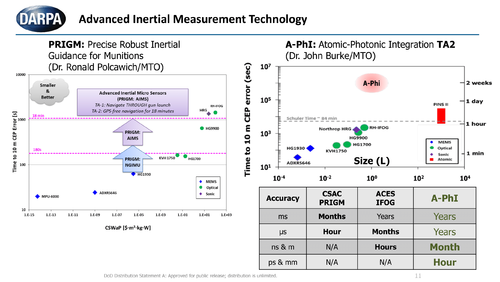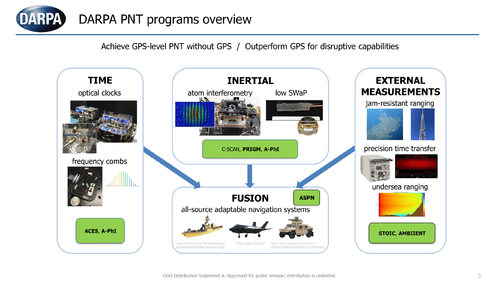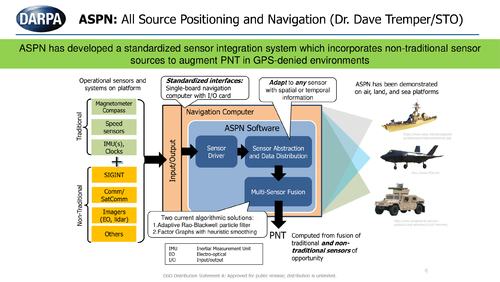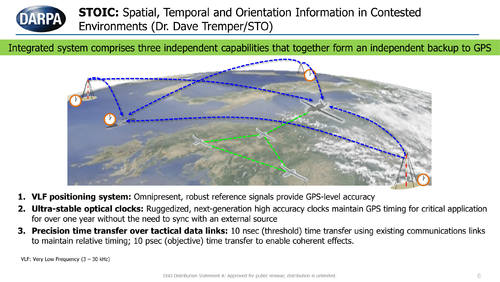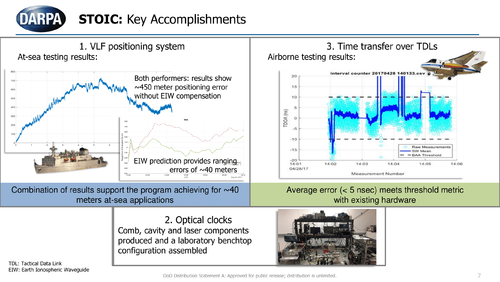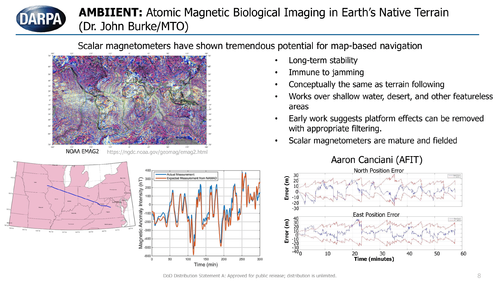[quoteI see no evidence that it was done prior to removal from service.
The entire history of development, production, deployment and retirment is publicly available it's all there in black and white.
Except they didn't stop at 100 missiles, 114 were built. So that makes no sense.
100 production missiles with 14 test missiles produced which went directly into 'long-term' storage to assess the effects of aging and storage on the various components. Fun fact is that a number of components are still in that warehouse today as they are still being used for that purpose. When Congerss cut the deployment to only 50, (48 actual) the rest were put into storage as backup missiles which is what is done in any normal operation. Some were at the actual bases and some were stored at the depot.
So going to the moon for the first time was easy but rebuilding Peacekeepers is too difficult, even with the first stages still being built for launch vehicles? Mm'kay.
Going to the Moon was not easy, never said it was but rebuilding the Peacekeeper from a commercial booster, (it's not the actual Peacekeeper stage, and then we have to rebuild the upper two stages and the warhead bus) and finding a place to deploy them when that didn't work out at all well the first time? Ya, it's less it's "hard" than it would be pretty silly to do something you know failed the last time instead of maybe something that will actually work?
That we only had 50 'active' missiles instead of 100? Every Peacekeeper information site points out Congress only allowed 50 to be deployed while the second batch of 50 were 'stored' until a viable deployment plan could be found. That they were deployed in converted MM3 silos? Again same sources. That they were all destroyed when the Peacekeeper was retired? Again it's part of the record, They were deployed to only one (1) base, F.E. Warren AFB in Wyoming, and only 50 of them of which 48 went into silos and two were put into ready storage at the base as replacement missiles. 14 went to Hill AFB and Vandenburg for static testing and training, and long term storage tests. As the next batch of 50 were produced they were sent to Hill AFB for storage until a basing scheme could be decided on which never happened. These were also used to swap out with silo missiles and the ready storage missiles for maintennance purposes.
Just a couple of links:
Yeah, but we had complete control of the skies above Iraq. There may be times where the location of a mobile launcher is known but most of the time it won't be and in 30 minutes it won't be where it was. The Midgetman also travelled in more of a mobile bunker.
First of all we should probably be clear that there is a HUGE difference between mobile TACTICAL/THEATRE missiles and mobile ICBM type missiles. Tactical/Theater missiles are smaller, faster to set up and of course limited in range which actually make targeting somewhat easier. (It's litterally a math problem more than any guidance technology) ICBMs however have to have both a very accurte launch position as compared to the target but must have a more sophisticated guidance and control system due to the longer distance they travel. Mobile ICBMs have an inherent accuracy problem that can only be solved with the use of certain specific methods I'll discuss in a bit. Meanwhile a tactical/theater mobile missile can actually be launched towards a specific target from a pretty big 'launch elipse' with specific post launch data updates to enhance the accuracy.
We didn't use nuclear weapons in Iraq and since the air patrols were being tracked by radar systems friendly to the Iraqies they were constantly informed of where we were looking. Spotting a non-moving launcher, (and most were stored in shelters which made it even more difficult) with a Mk1 eyeball, at night, at high speed was almost impossible. Even IR and low-light didn't help much. The only sure way to spot a mobile was with satellite or dedicated recon aircraft passes and that took time to get the information to those on site by which time the launcher would have either launched or moved on. In the case of a nuclear strike the time factors is greatly shorter and the nuke arrives long before the launcher can move significantly. Especially as it's likely a MIRV so there will be overlapping blast waves.
People tend to think that mobile launchers would drive all over the place but they don't and in fact can't and it has only been in the last few years that things like the GPS and geodetic survey's have gotten accurate enough to not require extensive pre-site surveying and selection for acceptable mobile accuracy. In practice a mobile can 'cruise' around a specific area and then when it gets the launch order it would make its way to a pre-surveyed spot to launch from. The missile has to know EXACTLY where it is starting from to have any chance of arriving where it is aimed and that's not as easy as you would think because while we have things like GPS today in an attack we're likely NOT to have that available or it could be compromised so your back to needing pre-surveyed launch points which limits your mobility options. Yes the Midgeman was hardned but not as much as one might hope and the thing was while people imagine a 'mobile launcher' being a single vehicle its not. The Hard Mobile Launcher was one of between three, (minimum) and five vehicles in the system per missile and they would only 'deploy' into secured federal lands (if you wanted to minimum) or open federal lands (where you'd need full security and maintenance crews) and it was likely the ONLY one that could survive a near miss.
Why can't it be used as a missile stage exactly?
Wrong propellant, the structure is too weak and needs reinforcing, and it does not have nor can it be fitted with the enhancments and subsystems that a military missile stage needs among other reasons. They took the Peacekeeper stage and pretty much gutted it to just a basic casing and commercial propellant and were pleasently surprised that it was actually lighter than they'd anticipated it would be, (the "120" was the estimated final all-up stage mass in thousands of pounds, it ended up being only a bit over 117,000lbs when all was said and done) in the end.
The only reason it opened up at all was because the collapse of the USSR pointed out that there were some things that had to change. Other than that, it's same old same old. Now it's fixed those things, there are no other changes in progress.
No it had started to open up so it could access the western markets as the older "Communism" didn't interface well with the open markets. Progress has been slow and that's to be expected given the situation but they are and have been moving away from Communism even though they kept the name. Like Russia it's not really open to democracty but its also not as all powerful as the older Communist systems were. To put it mildly both have moved more towards "Imperial" systems and one-man rule rather than what we'd consider "reprentative" governments. They still however have significant markets and trade open to the US so while not our friends, they aren't our enemies either.
Much as many American's like to talk about only dealing with and exporting 'democracy' and 'freedom' we've always been more about business and trade over government and that's not likley to change. In the very end we actually DID win the Cold War because "Communism" as it was then is pretty much gone and buried but out major mistake was thinking that once it was gone ONLY democracy was left and that has NEVER been true. China and Russia along with India, Japan, an organized Asia and South America all are pushing to become world leaders in their own right and conflict is pretty much inevitable given how humans work.
The goal should be matching the enemy. A small MM3 replacement is like continuing to build P-51s through to the 90s.
The F-15 was the 80s eqivilent of the P-51, the F-22 the 90s equivilent. Oddly enough we happen to know you can use the support systems and infrastructure for the F-15 with the F-22 and a P-51 can even use them with few issues. Meanwhile a new missile with modern technology and design that can use the majority of the MM3 infrastructure and support systems should be able to match pretty much all the enemy systems. Direct matching the enemy has never been the goal and never should be because it will always be playing catch up. We have to get a modern GBSD to at least update our deterrence but that should not and hopefully will not be the end of it because we can't assume that enemy will stop there either. So we move on and build another and hopefully complimentary system but we have to accept that's going to cost more and require more resources and support. We can't have both because at this point we can only do one and since we need capability NOW not two or more decades from now we need to focus on the one we know we can do and support.
So basically the Midgetman is almost as wide as the MM3 third stage.
Second and third stage and they based the design on it with a new build booster and optimized the stages for a single warhead and mobile launch.
The new missile proposed wouldn't be mobile though.
Doesn't need to be as the plan is to use it to replace our current silo based missiles with mobility as an option once that's been done. As I noted above mobility isn't as applicable for US planning as one might think. China and Russia are already invested in mobile systems so they don't have to make many changes and they tend to design for mobile and then put them in silos. Mobile systems require more personnel, more support systems and more and dispersed facilties for maintenancne and operations than silo basing which is why the US hasn't deployed them outside tactical systems. Mobile is harder to get into operation than silo basing and its also more expensive over the long run than fixed facilities.
Jeez, it's a wonder we even bothered building silos in the first place. What happened to the old Titan silos anyway? Surely they were big enough?
The history and execution of the US ICBM systems is fascinating and well worth getting into but in essence the US found early on that mobile basing had to many issues versus fixed sites. You can get around them with enough money and work, The Soviets tried to develope a mobile ICBM in the late 60s but they didn't get a working one until the mid-80s and even then it suffered from problems with accuracy and security. They still needed pre-surveyed launch sites and China has the same issue with their mobile launchers. (One reason not really 'fear' North Korean mobile launchers is we know EXACTLY where their launch sites are already) As of today there' a bit better due to advances in navigation technology but unless used in a first strike role, their accuracy will be less than that of a fixed launcher. To overcome this is one reason for the development of manuevering warheads which would allow a more accurate 'second' strike assuming the mobile launcher can survive the initial strike. The converse problem is that manuvering warheads, assuming reconissnce assets are still available, mean your mobile launchers are now vastly more vulnerable than previously.
The old Titan silos were destroyed, (imploded and filled with rubble) though many launch centers and mainenance anexs are still intact, They had a huge number of issues that would have been difficult to fix if we wanted to actually base the Peacekeeper in them but those pushing the initial idea weren't really interested in fixing those problems in the first place. They simply didn't want the proposed "racetrack" or "dense pack" bases in their states. (And on the other hand none of the alternate basing systems looked to be any cheaper or more survivable than silo conversions anyway)
The problem with the Titan silos was they were designed around a large liquid propellant missile in a compact arrangment.
One missile silo and one crewed mainteancen and launch control center all in one spot. They weren't really buried deep enough or hardened enough to survive a modern near-miss or set up for modern solid fueled missile operations.
It's a bit harder to see but this is a typical MM3 missile field where you have about 10 silos per one launch center which is vastly more efficent and survivable:

en.wikipedia.org
To fix the Titan II silos was going to not only take a lot of time and effort but it would limit the number that could every be deployed and frankly everyone was hoping Congress would refund the replacement effort. At the same time other suggestions such as putting half the deployment in rail or air based systems was gaining ground and the idea of using the Titan II silos became less and less viable.
Now I need to also point out that it was/is possible to fully gut a current silo location and rebuild a totally NEW silo into that spot but it won't be easy or cheap, (though actually easier and cheaper than trying to fit a larger missile into the existing silo) and would take the entire silo complex out of action for a year or more while you're doing it. On even more of a downside what you're doing will be clearly visible and obvious to anyone wanting to keep tabs on you and likely they could get a very good idea of what your hardening and countermeasures are pretty easy.
(Conversion took several months but was a lot more costly than originally anticipated and as noted it looked to have made the Peacekeeper silos less rather than more survivable)
After the missile is built, it sits in a silo.
For a while, then it's regularly pulled out and replaced with a spare and sent into extensive preventative maintenance and rotated back into ready storage. Take note that those 14 extra Peacekeeper's were specifically for long-term storage and preventative maintenance testing as we had no idea how long either would take for the missile. As these are so important they go through regular testing and mainteancen checks and functional testing is done all the time to ensure they are ready to go when needed. Missiles NEVER just 'sit' in the silos!
Randy


